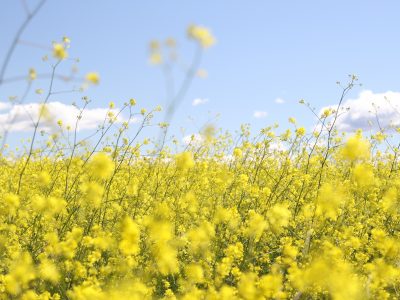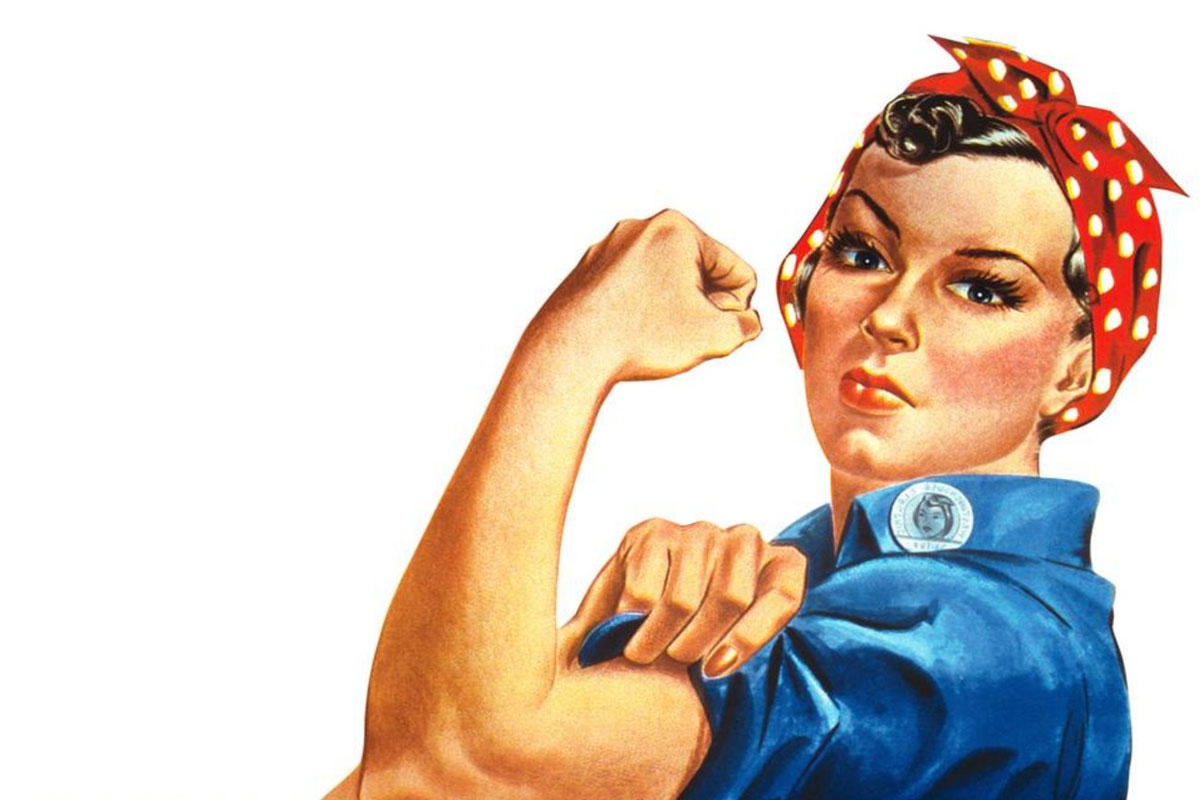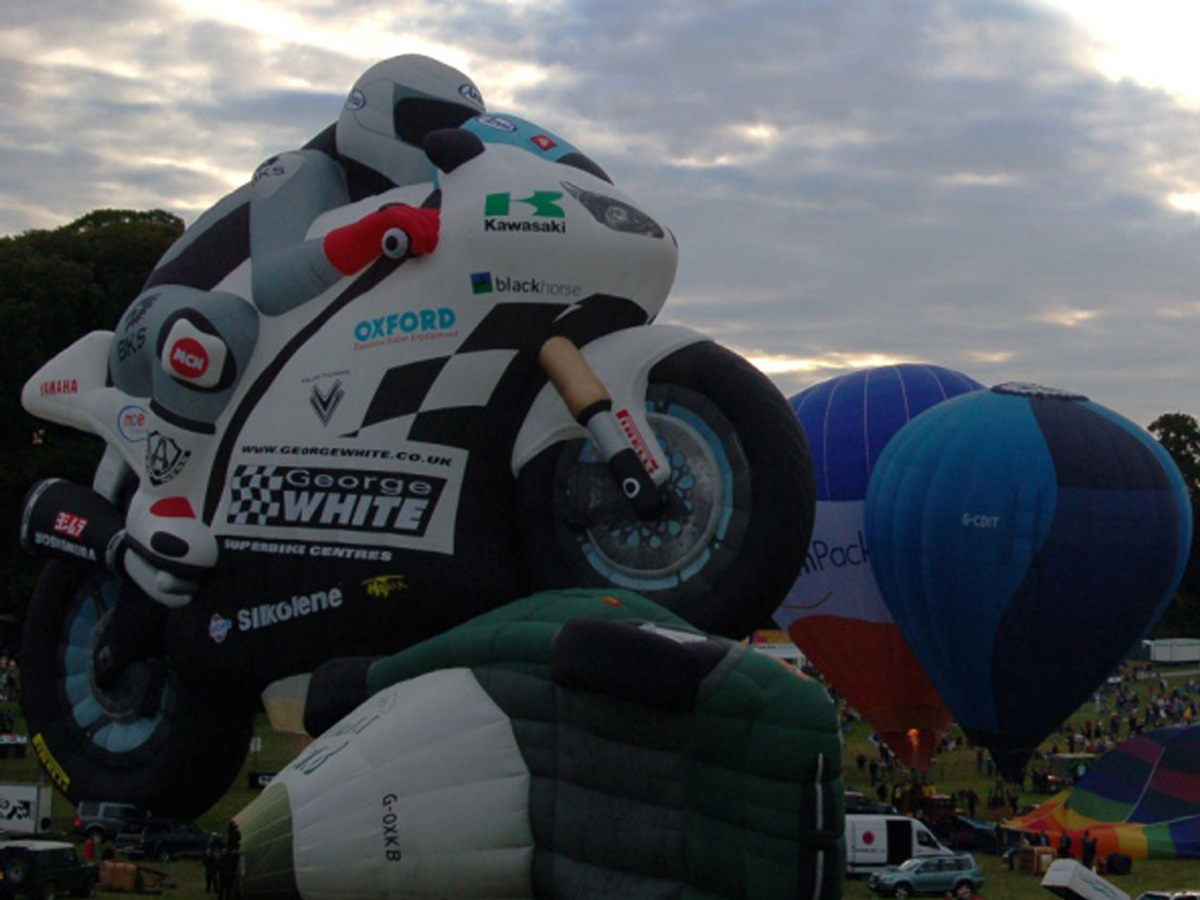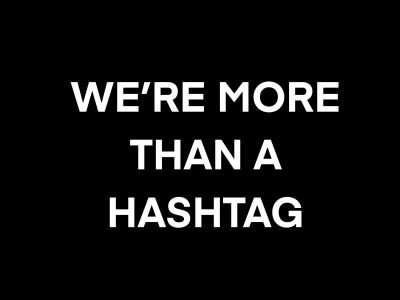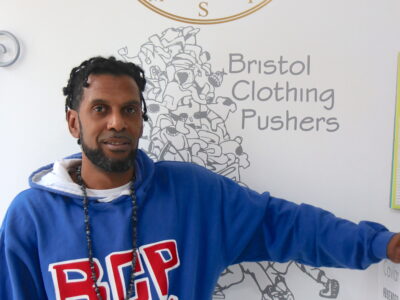Waves of Plastic: Behind the lens with photographer Mandy Barker
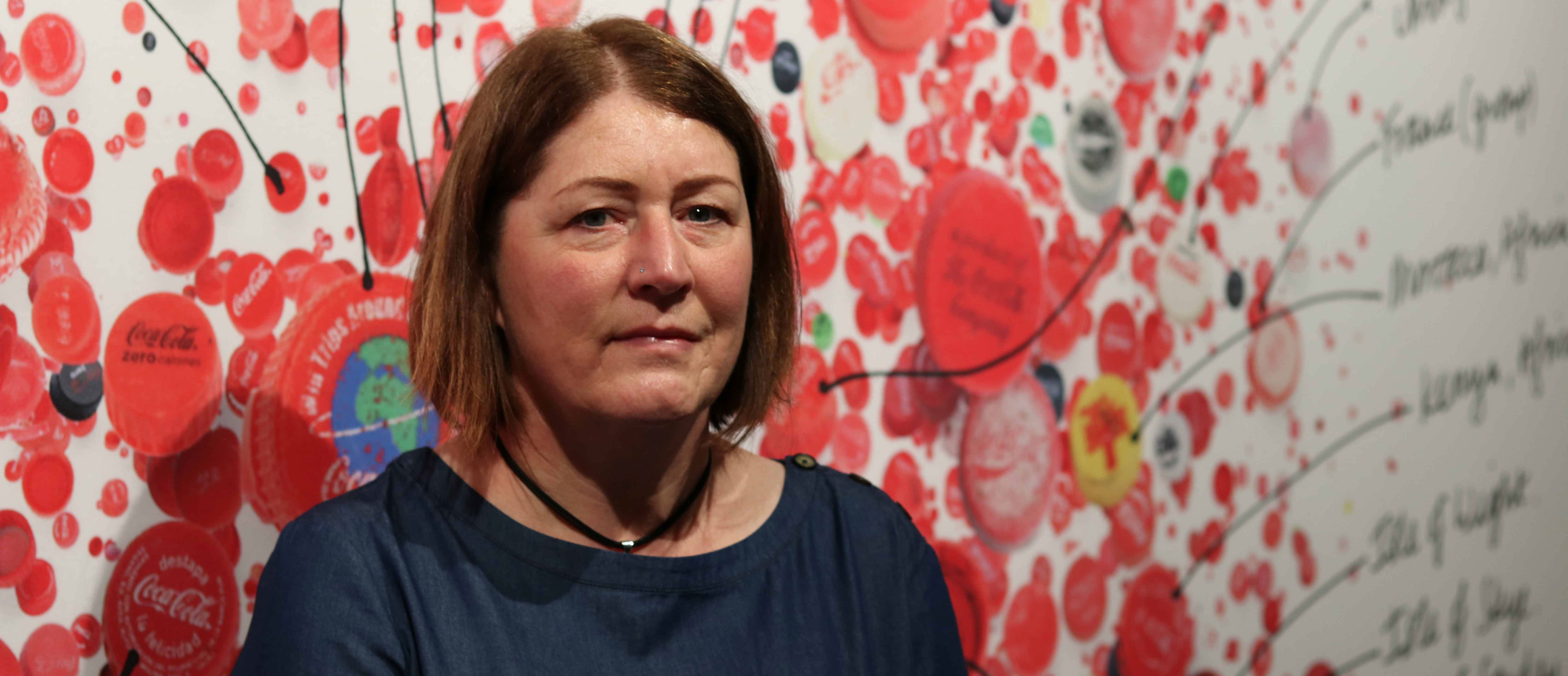
Image c/o Sumaya Hassan-Murphy.
Sumaya and Asmaa quiz Mandy on her artistic practice and ask why her work is so vital when it comes to saving the planet
Mandy Barker’s work blends unwavering artistic vision with collaborative scientific research, digging into the hard-hitting issue of plastic in the ocean and how it’s destroying habitats, killing wildlife and contributing to our planet’s extinction. At first glance, Mandy’s work is beautiful and arresting. However, when you give your attention to her captions, you learn these intricately crafted pieces are actually made up of some of the one hundred and fifty million tonnes of plastic currently circulating our planet’s waters. It was disheartening to recognise items we use regularly in her photos and to be forced to acknowledge that we are culprits in this assault against our environment. Mandy’s work relays the haunting reality of what’s to come for the human race if we do not sit up, take action, and save our planet.
Barker’s exhibition will be housed at the Royal Photographic Society from April 4th to June 23rd. We chatted to her about her inspirations, the emotional impact of her work, and her tips on how to do your bit to save the world.
Hi, Mandy. Can you tell us a little bit about what you do?
I’m a photographic artist and I’ve been taking pictures of marine plastic debris for almost ten years now. I grew up in Hull and often visited local beaches near my hometown where I would collect shells and driftwood. Over the years when visiting my parents, we’ve gone to the same beach and noticed things washing up on the shoreline, things like a partially submerged car, a fridge freezer, computer casings, children’s car seats – quite large pieces of plastic. I wondered where it was coming from and if other people knew that this was happening. So, I began my first series, ‘Indefinite,’ in which I collected items and photographed them on a black background. I got people to send me collections from all around the world and visited remote locations to try and raise awareness of plastic pollution.
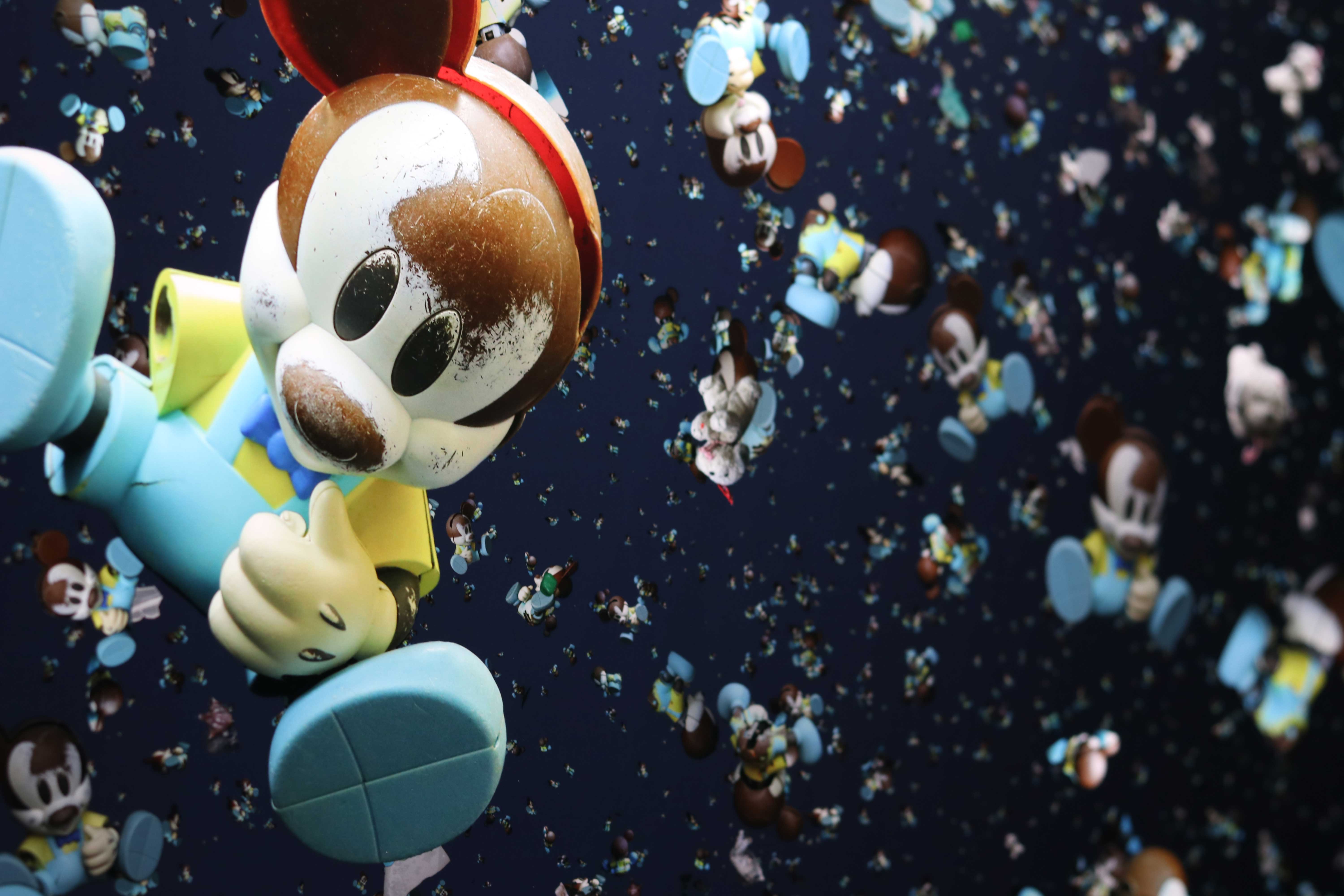
29.24N, 172.05E from Shoal artwork c/o Mandy Barker. Image c/o Sumaya Hassan-Murphy.
Practically speaking, what does the process of creating your work entail?
So the process would of course start with me recovering plastic and taking it back to the studio. I have black velvet background on the floor which I’ll scatter the smallest pieces onto to then photograph. I then remove them and repeat this process with the medium and large items. I then photoshop them together in three layers. This technique creates a depth of suspension, which hopefully makes you feel like you’re looking under the sea. I initially took pictures of plastics as I found them on the shoreline, but found people weren’t as interested as they see rubbish all the time on the streets. The whole point of making them attractive is to engage an audience and then deliver all the shocking facts and statistics.
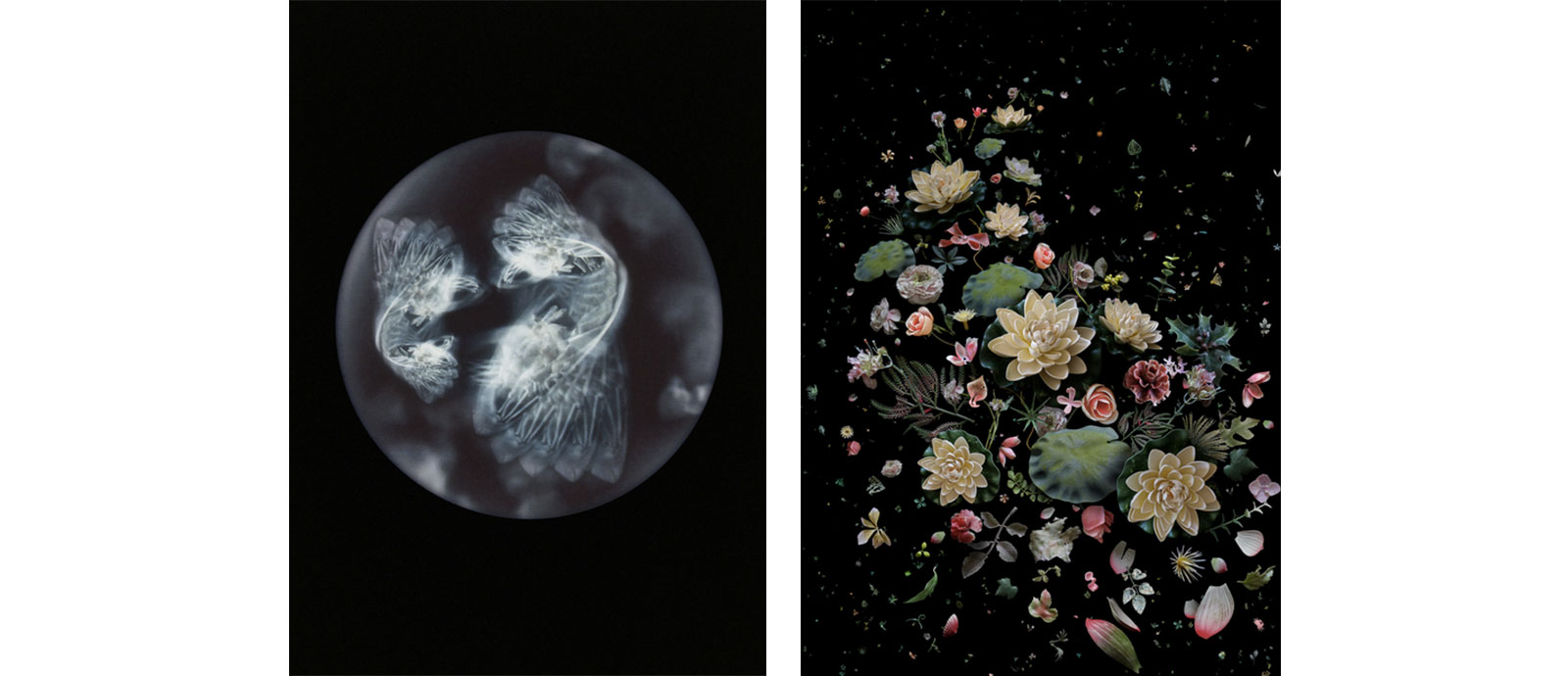
Beyond Drifting c/o Mandy Barker. Hong Kong Soup:1826 c/o Mandy Barker.
Whose work inspires you?
Lots of people but it’s not just individuals – nature inspires me a lot; like the things I find along the seashore, the way objects get washed up, the patterns in nature. They all influence shapes in my work. Early on I was really inspired by the artist Cornelia Parker and the photographer Simon Norfolk. There was a particular image he took of dawn in the Scottish highlands. It was a seemingly beautiful picture of a lake, but when you read the caption you find out that a trawler had been sunk, killing four members of the same family. That image has stayed in my mind and made me think about the relationship between image and text, and how powerful that can be.
What’s it like existing at the intersection of art and science?
For me it’s essential because I don’t want to produce art for no reason. I think if I can underpin my work with true, current research, it makes it far more powerful. For example, the ‘Beyond Drifting’ series was based on research from Plymouth University, where it was discovered plankton was eating microplastic particles. If I can represent science through art and bring it to public spaces, it can reach a larger audience than it would on its own.
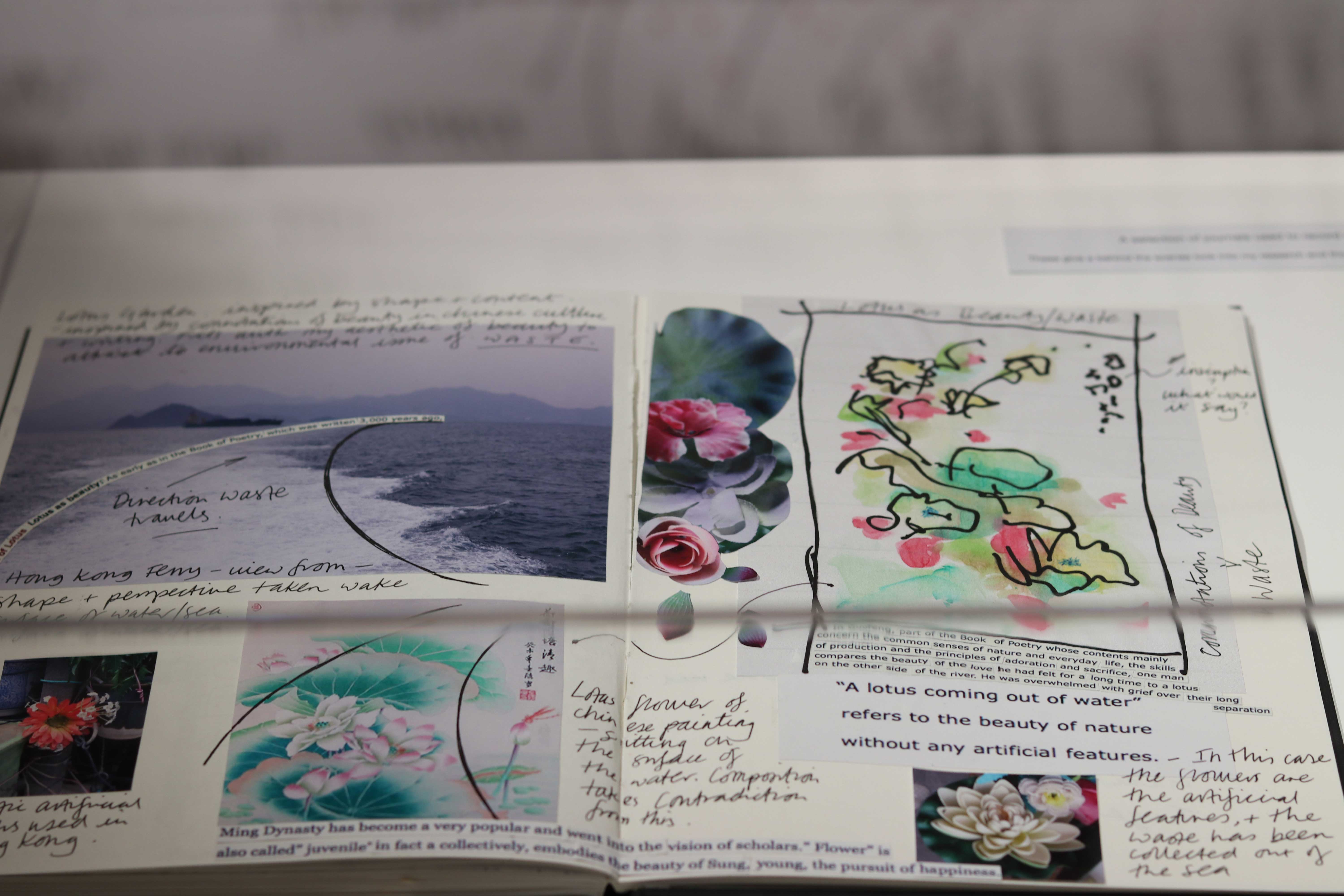
Sketchbook c/o Mandy Barker. Image c/o Asmaa Jama.
Does your work take an emotional toll, for example the series ‘Shoal’ which is based on the tsunami? If so, how do you take care of yourself?
That was a particularly difficult project. Although it was deeply disturbing, I think it was important to see the impact of the tsunami – people’s lives scattered on the shoreline and towns completely flattened. It was a double-edged sword: it was a scientific expedition, but at the same time it was very emotive and this was hard to balance. Generally though, I think the very fact that what I’m doing is of importance is what helps me with the emotional side. I want to make the rest of the world shocked by it so they hopefully think about the plastic they use.
All of your work is beautiful but of course there are elements of morbidity through the implied destruction of our planet. What is something that you think is really important to take away from your work?
Probably these tips (pics to be inserted). If you want to do more you can sign petitions to try and make the government enforce legislations on plastic companies, making them responsible for the after use their plastics. You can also join environmental clean ups. However, whilst that’s a good thing, it’s not really solving the issue at its source. We need to stop it from entering the ocean. Although it’s a good start, straws and cotton buds aren’t going to save the world.
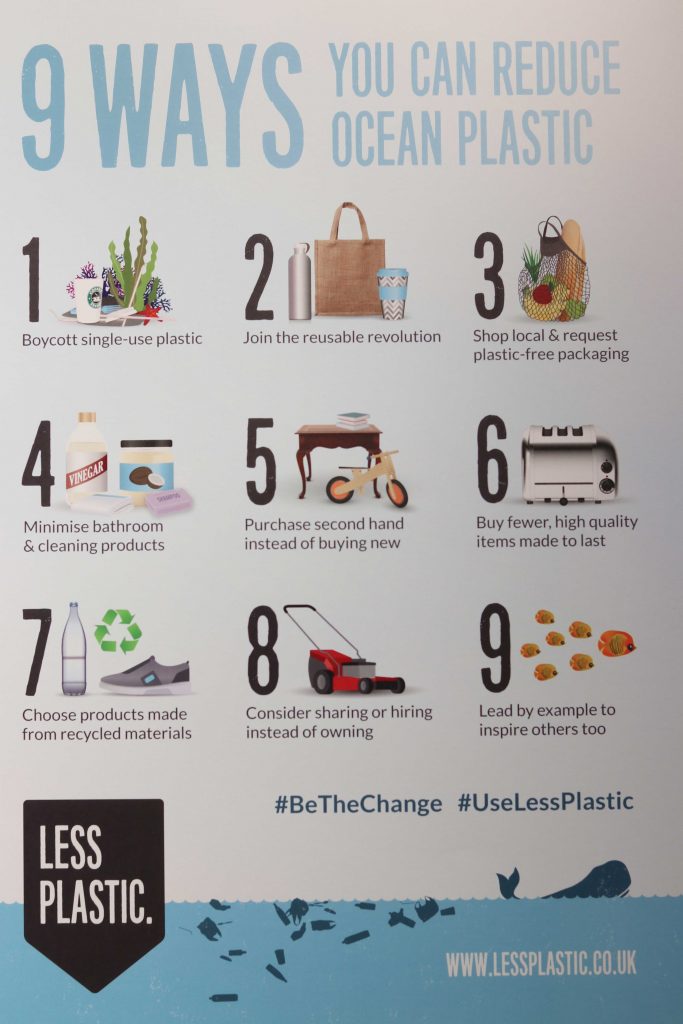
Poster at Mandy’s exhibition. C/o Mandy Barker.
Are there any other themes that you really want to cover?
Yes, I’m half way through a project aiming to raise awareness on synthetic fabrics. If you’re not wearing natural materials like wool or cotton, the chances are you’re wearing plastic. I want to raise awareness for the fact that actually 60% of our clothing now is plastic. And when this clothing is washed, microplastic fibres come off. They escape our washing machines, water treatment works and end up in the stomachs of sea life and into our food chain.
We know that you have some events coming up. Could you tell us a bit more about that?
I’ve got an exhibition running currently, for the next few months. In June I’m going on a trip to Henderson Island, which is one of the most polluted plastic places on the planet, so much so, that it’s uninhabited by humans. The plastic issue is really affecting wildlife there though. Some of these creatures are native to the island, so if this level of pollution continues to increase, they could potentially become extinct. It’s a really key place to visit and I almost can’t believe I’m actually going there. It’s really important.
You can check out more of Mandy’s work here and grab tickets to her exhibition here.
What are your thoughts on plastic pollution and what’s being done to aid the issue? Let us know in the comments.
